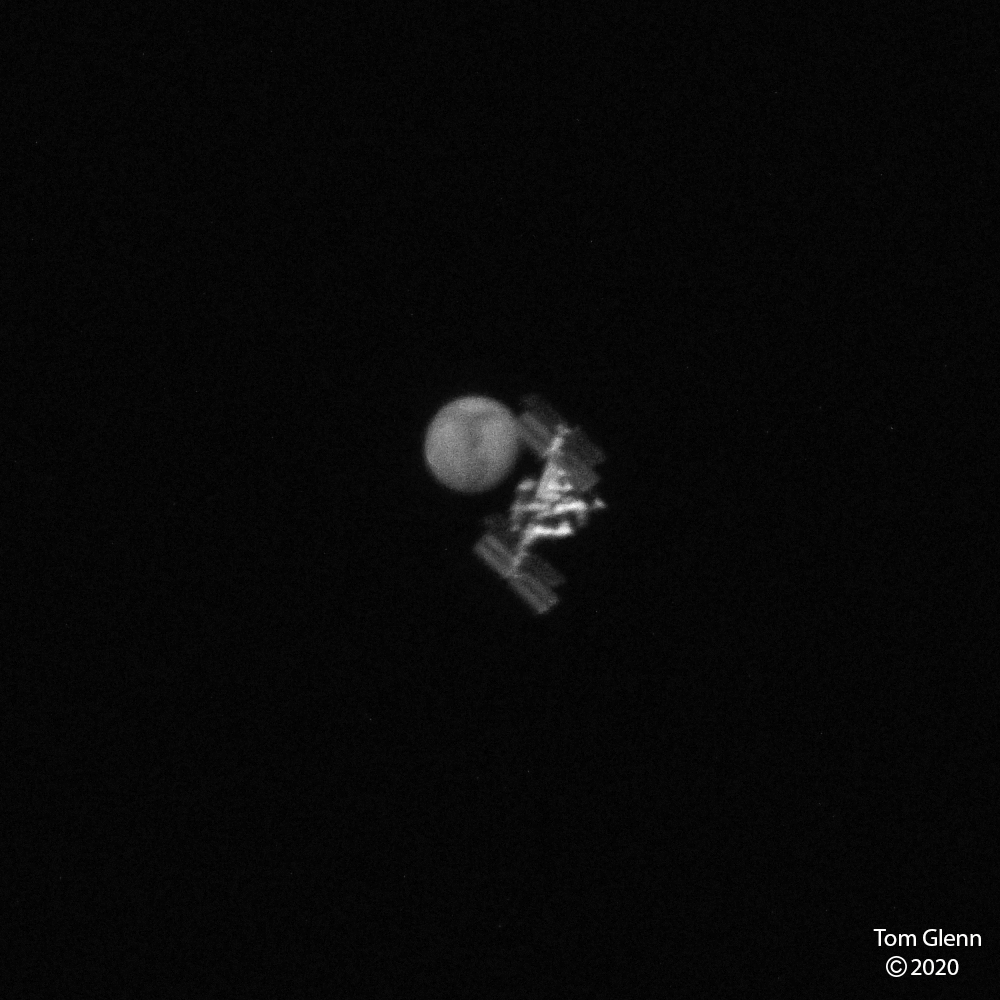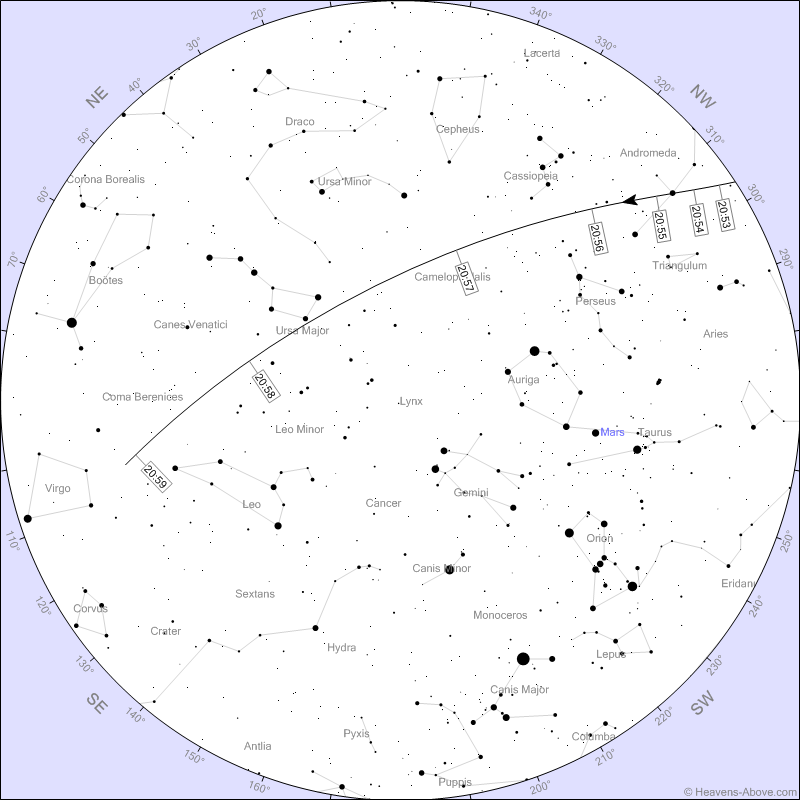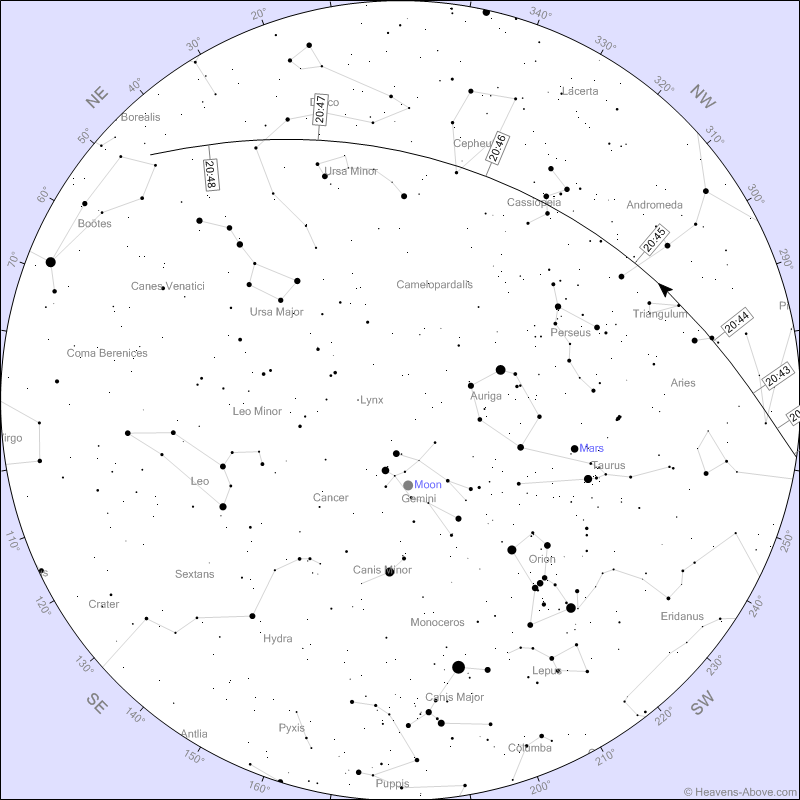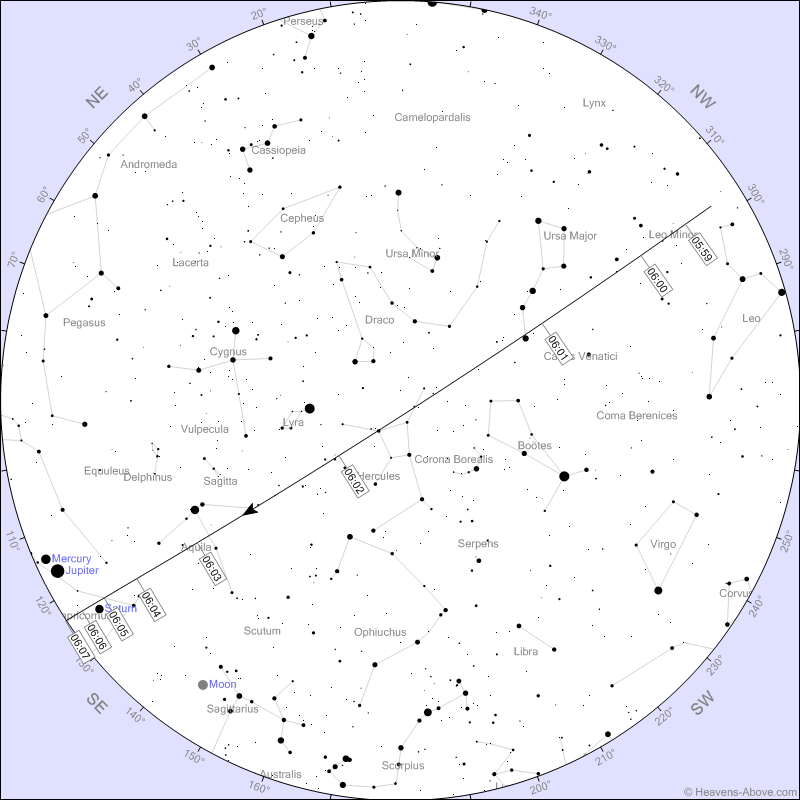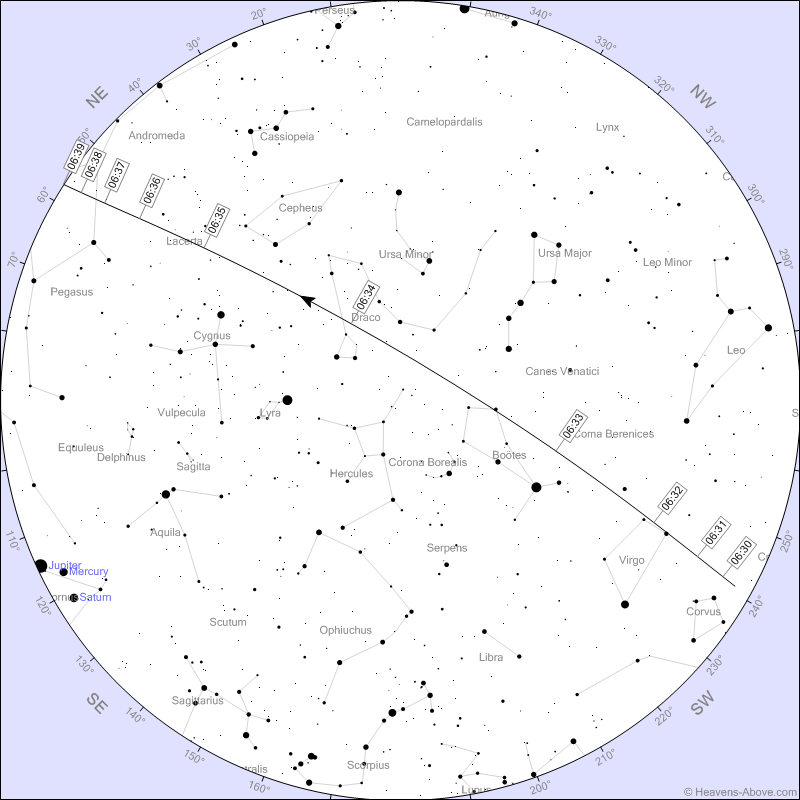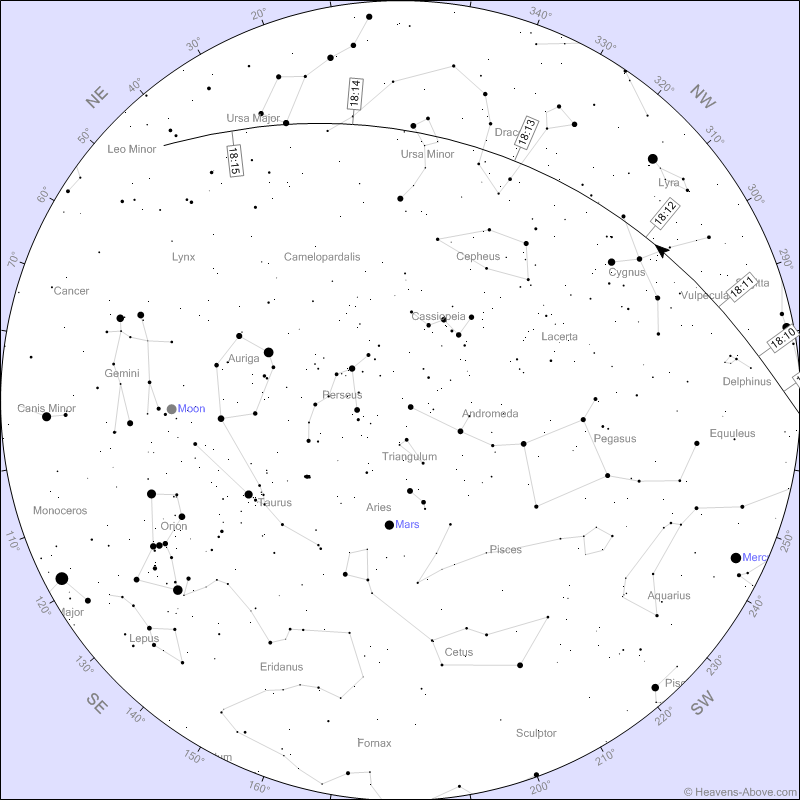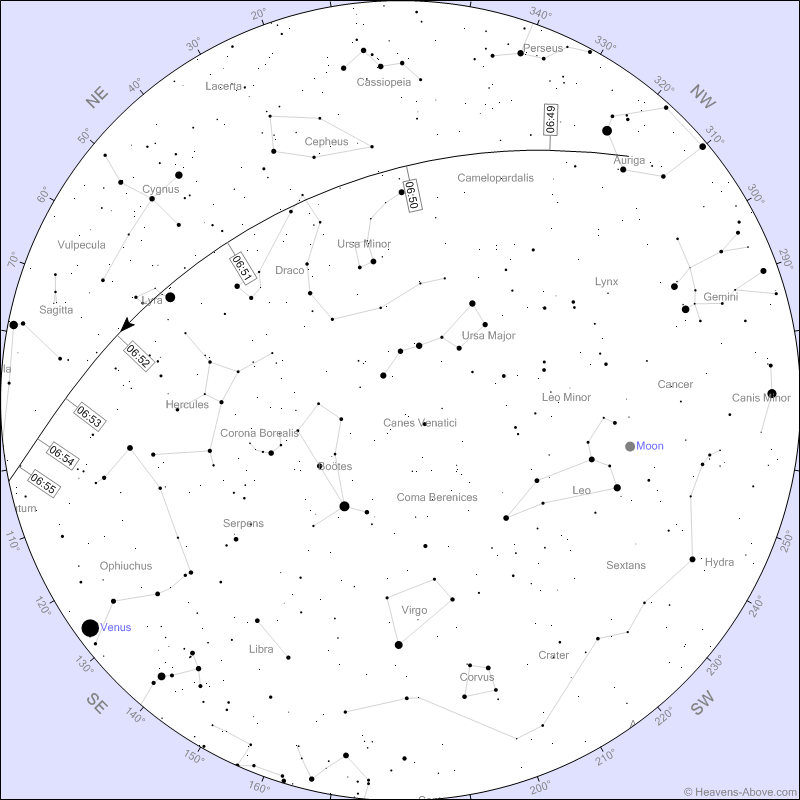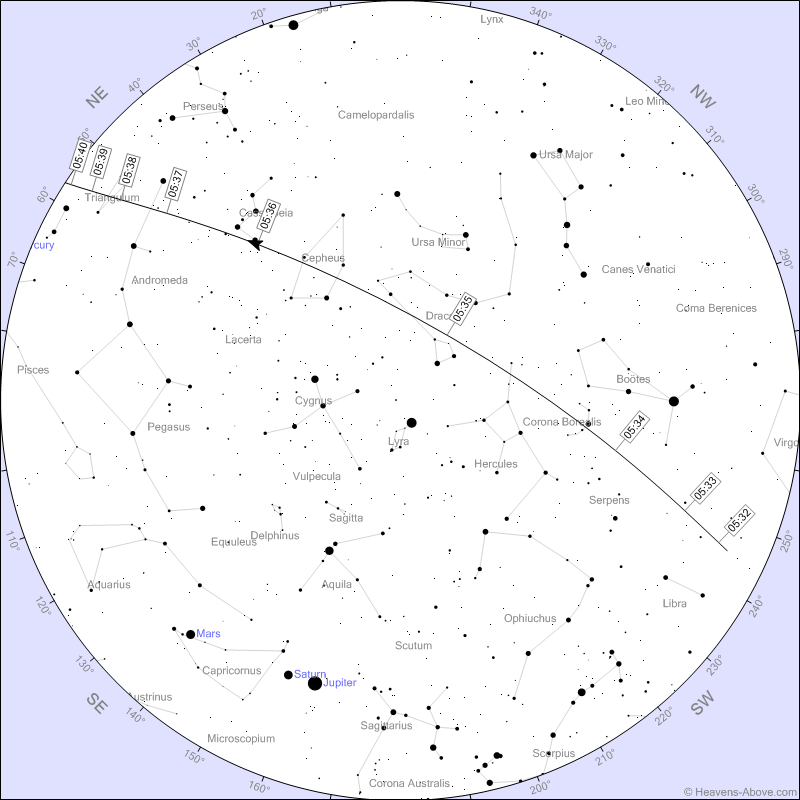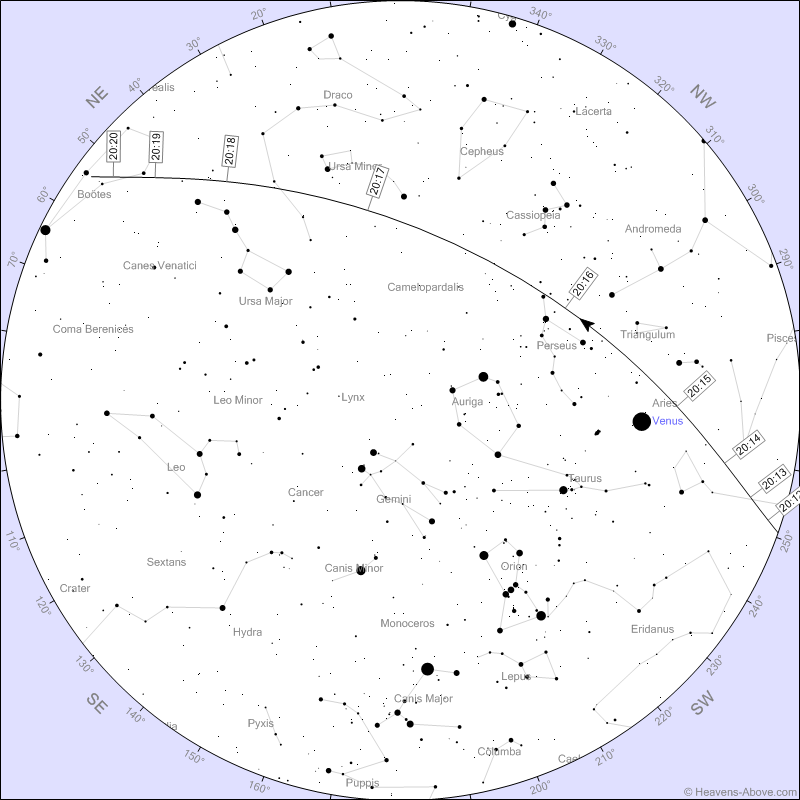Greater Toronto Area Space Station Flyovers for the week of April 4th, 2021
Tom Glenn of San Diego, CA used software to work out when the International space Station would fly past Mars, and captured this amazing image on Monday, September 21, 2020. He recorded a video through his camera affixed to a tracking telescope. NASA APOD for Sept 23, 2020. Artificial satellites are visible because they are…
Read more
